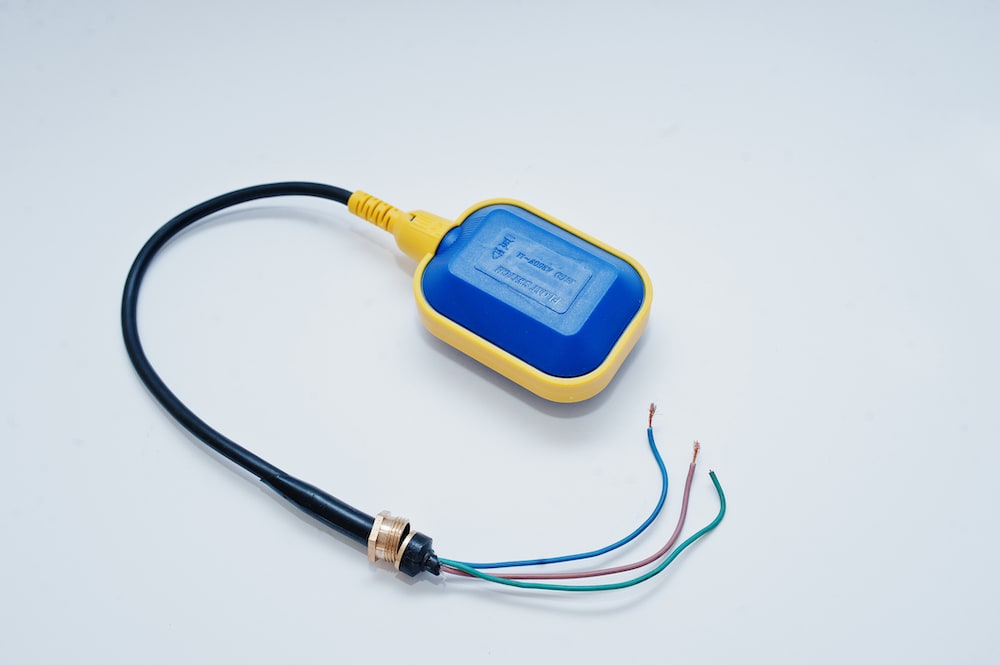- Published 28 Mar 2024
- Last Modified 28 Mar 2024
- 5 min
Enhancing Wastewater Treatment in Australia with Float Switches
Explore how float switches revolutionise wastewater treatment in Australia, enhancing efficiency and compliance with environmental standards.

Wastewater management, vital for Australia's environment and public health, heavily relies on innovative technologies like float switches. These devices are crucial for managing liquid levels, automating the treatment of approximately 70,000 litres of wastewater per person yearly. By improving process efficiency and ensuring responsible discharge, float switches play a significant role in protecting Australia's ecosystems. This blog delves into their impact on wastewater management, spotlighting their importance in operational efficiency and regulatory adherence.

The Role of Float Switches in Wastewater Treatment
Float switches, essential in wastewater treatment, manage pumps and devices by monitoring liquid levels in tanks, sumps, or wells. Their precise control maintains treatment within set parameters, essential for biological and chemical stages, preventing overflows and underflows to optimise system efficiency. These water level switches also activate alarms for quick responses, enhance energy efficiency, enable automated water sampling for quality assurance, and assist in stormwater management by managing volume spikes and minimising maintenance needs. Their role is complemented by level probes that provide detailed measurements for comprehensive monitoring and control.
Unlocking Efficient Wastewater Treatment with Float Switches
In the complex workflow of a wastewater treatment plant, float switches play a pivotal role across various stages, from sedimentation tanks to aeration basins, by automating the filling and draining processes to ensure the system's efficient and continuous operation. Within sedimentation tanks, these level switches control water levels to effectively separate solids from wastewater, a precision vital for preventing system overloads and preserving effluent quality. Similarly, in aeration basins, they adjust water levels to optimise conditions for the microbial breakdown of pollutants. This precision maintains operational balance, ensuring plants exceed efficiency and regulatory standards while preventing system failures and compliance breaches, enhancing resilience.
Compliance with Australia’s National Water Quality Management Strategy
Beyond streamlining operational efficiency, it's essential to consider how these devices facilitate compliance with Australia's stringent water management standards. The Australian Guidelines for Sewerage Systems (Effluent Management), part of the National Water Quality Management Strategy, sets forth a framework aimed at responsibly reintroducing treated wastewater into the environment. This approach is grounded in safeguarding public health and protecting ecological integrity, with objectives that include minimising health risks, encouraging effluent reuse, and mitigating impacts on land and water bodies.
By integrating float switches as part of their effluent discharge control systems, wastewater treatment facilities enhance their ability to adhere to the Australian Guidelines for Sewerage Systems. This improved precision in managing liquid levels, achieved through the effective use of these controllers, is crucial in preventing the release of inadequately treated wastewater, mitigating contamination risks and safeguarding water quality in wastewater management.
Selecting the Right Float Switch for Wastewater Applications
Selecting the appropriate float switch for wastewater treatment applications is a process that requires careful consideration of several key factors to ensure optimal performance and durability:
- Material Compatibility: Choose materials like stainless steel or certain plastics that resist wastewater chemicals to prevent corrosion.
- Mechanical Durability: Select switches that withstand the wear and tear of treatment plants for long-term reliability.
- Operational Range: Pick a switch with the right stem or cable length for the facility's tank size and depth, ensuring accurate water level monitoring.
- Switching Action: Decide between normally open (NO) or normally closed (NC) switches based on control needs — NO for rising and NC for falling water levels.
- Electrical Specifications: Match the switch's voltage and current ratings with the control circuit for safe operation.
- Mounting Options: Consider tank design and space for easy installation and maintenance-friendly switches.
Installation and Maintenance Practices for Wastewater Facilities
For optimal float switch operation in wastewater treatment, adherence to best installation and maintenance practices is crucial:
Installation Guidelines:
- Assess Needs: Understand your process's specific needs, focusing on the wastewater's chemical properties.
- Select the Appropriate Model: Choose a float switch that matches the wastewater's chemistry and the application's environmental challenges.
- Professional Installation: Rely on qualified personnel for correct and safe installation.
Maintenance Tips:
- Routine Inspections: Regularly check for wear, damage, or debris that could impair switch performance.
- Adapt to Environmental Changes: Monitor how environmental factors like temperature shifts or corrosiveness impact functionality.
- Regular Calibration: Test and adjust switches periodically to ensure they accurately detect water levels, enhancing treatment efficiency and compliance.
Implementing these practices ensures float switches function reliably, supporting the facility's operational efficiency and environmental adherence.
Elevating Wastewater Management with Float Switch Technology

Float switches are necessary for elevating wastewater treatment efficiency and regulatory adherence across Australia. By providing precise control over liquid levels, they ensure that treatment plants operate with heightened reliability and efficiency, aligning with the broader objectives of environmental safeguarding and responsible water management. To access a comprehensive selection of float switches tailored for the wastewater sector, RS Australia offers a platform to enhance your facility's operational effectiveness and regulatory compliance. We also provide a range of helpful resources, from selecting the ideal flow metre for water management to choosing the appropriate PPE.
Popular Float Switches Brands
Sensata / Cynergy3
Sensata / Cynergy3 is a leader in designing and manufacturing high-quality sensors and control solutions. Specialising in float switches and liquid level sensors, they offer robust products for accurate and reliable fluid measurement in industrial and wastewater treatment applications.
Gems Sensors
Gems Sensors excels in engineering a broad spectrum of fluid sensing and control technologies. Known for their durable and precise float switches and level sensors, Gems Sensors provides key solutions for monitoring and managing liquid levels in harsh wastewater environments.
Related links
- Electrical Timers: Types and Best Choices for Outdoor Use
- Ensuring Safety in Public Transport with Emergency Stop Switches
- The Role of Electric Motors in Sustainable Railway Systems
- The Critical Role of Push Button Switches in Mining Operations
- The Importance of Heavy-duty Cable Protection in Safeguarding...
- The Role of HVAC Systems in Mining Air Quality & Humidity
- Advancing Railway Safety with High-Quality Cabling Solutions
- Float Switches for Home Ponds in Australia